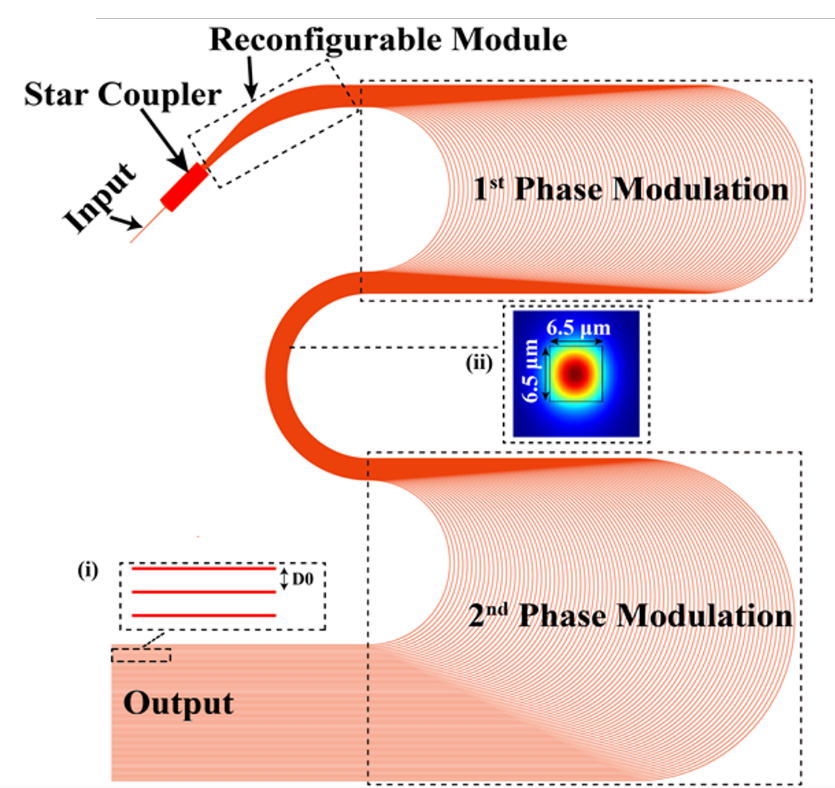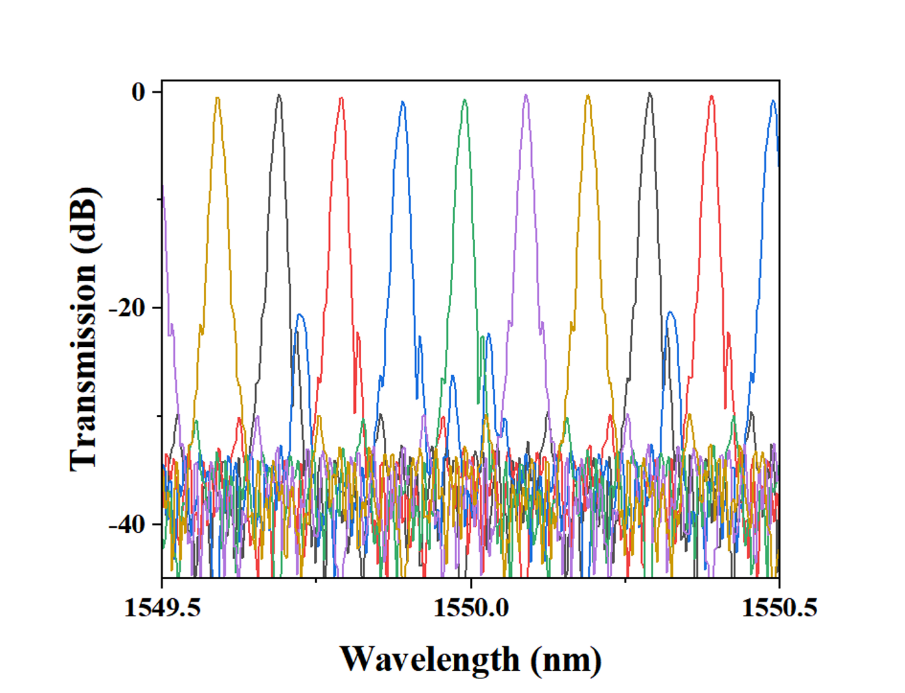Recently, the Astronomical Photonics team at the Nanjing Institute of Astronomical Optics & Technology (NIAOT) of Chinese Academy of Sciences, in collaboration with a team from Shanghai University of Engineering Science, has made new progress in the development of cascaded phase-modulated waveguide array (CPMWA) spectroscopic chips:
(1) Through the design of cascaded phase-modulated waveguides, they achieved the design and development of a high-resolution spectroscopic chip with a designed resolution of 100,000 and a measured resolution of 68,000.
(2) By employing a post-processing spectral reconstruction algorithm, they improved the spectral contrast to 20 dB.
High-resolution waveguide array spectroscopic chips typically rely on long-delay lines, which pose challenges such as large device sizes and difficulty in manufacturing. The team adopted a cascaded phase-modulation structure (as shown in Figure 1).
Under the same spectral resolution, this design reduced the overall chip size by 90%, enabling high-resolution chips to be achieved in small chip dimensions. This innovative design effectively addressed the dependence of high-resolution spectroscopic chips on ultra-long waveguides, exploring a new path toward miniaturized high-resolution spectrometers.
The result were published in the academic journal Chinese Optics Letters on March 23 (DOI: 10.3788/COL202523.031301).
Ph.D candidate Zhong Yunxian is the first author, and Dr. He Jinping, the head of the Astronomical Photonics team, and Professor Feng Jjun from Shanghai University of Engineering Science are the corresponding authors.

Figure 1: Diagram of the CPMWA Chip Structure
The astronomical photonics team has established a chip spectrometer setup in the laboratory and obtained measured spectral data, as shown in Figure 2. A spectral resolution of 68,000 was measured. However, unavoidable waveguide length errors during micro-nano manufacturing introduced phase errors into the phase array, resulting in a spectral contrast issue (a higher secondary peak), as shown in Figure 2(b).
To address this issue, the team proposed a spectrum reconstruction algorithm by modeling light propagation, multi-beam interference, and imaging processes, enabling precise calculation and correction of phase deviations in each waveguide. The measured data demonstrated that this algorithm improved spectral contrast to 20 dB, as shown in Figure 3. This method does not require additional hardware calibration, laying the foundation for mass-producing low-cost, self-calibrating chip spectrometers.

Figure 2 Spectral Resolution Calibration

Figure 3: Contrast reaches 20 dB after spectral correction
This spectrogram chip is a direct dispersion-type chip, characterized by high resolution, high precision, and wide bandwidth. It holds significant application potential in fields such as astronomical observations and space exploration.
This research was supported by several funding programs, including the National Natural Science Foundation of China, the Jiangsu Provincial Key Research and Development Program, and major science and technology tasks of the Chinese Academy of Sciences.